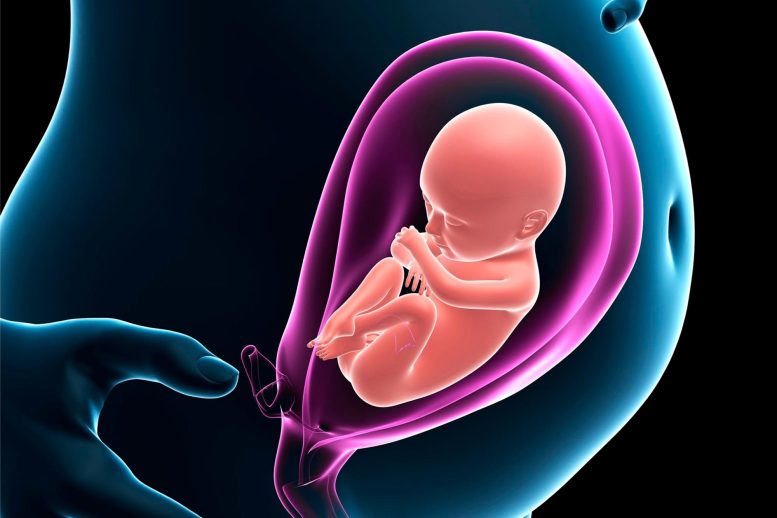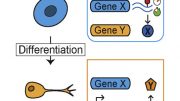
Gestational iron deficiency is a condition that occurs when a pregnant woman does not have enough iron in her body to meet the demands of both herself and her growing fetus. This can lead to various impairments, including an increased risk of preterm delivery, low birth weight, and developmental delays in the baby.
Researchers have identified a potential cellular source for the impairments related to gestational iron deficiency.
The development of the human brain starts well before its physical structure takes shape. During this stage, a network of cells begins to organize, which plays a crucial role in determining brain health throughout a person’s life.
Despite numerous studies linking low iron levels in pregnant mothers to an increased risk of cognitive impairments, such as autism, attention deficit syndrome, and learning disabilities in their children, iron deficiency remains a widespread issue among pregnant women and young children.
The mechanisms by which gestational iron deficiency (GID) contributes to cognitive impairment are not fully understood. The laboratory of Margot Mayer- Proschel, Ph.D., a professor of Biomedical Genetics and Neuroscience at the University of Rochester Medical Center, was the first to demonstrate that the brains of animals born to iron-deficient mice react abnormally to excitatory brain stimuli, and that iron supplements given at birth does not restore functional impairment that appears later in life.
Most recently, her lab has made significant progress in the quest to find the cellular origin of the impairment and have identified a new embryonic neuronal progenitor cell target for GID. This study was recently published in the journal Development.
“We are very excited by this finding,” Mayer-Proschel said, who was awarded a $2 million grant from the National Institute of Child Health & Human Development in 2018 to do this work. “This could connect gestational iron deficiency to these very complex disorders. Understanding that connection could lead to changes to healthcare recommendations and potential targets for future therapies.”
Building the map
Michael Rudy, Ph.D., and Garrick Salois, who were both graduate students in the lab and co-first authors of the study, worked backward to make this connection. By looking at the brains of adults and young mice born with known GID, they found disruption of interneurons, cells that control the balance of excitation and inhibition and ensure that the mature brain can respond appropriately to incoming signals.
These interneurons are known to develop in a specific region of the embryonic brain called the medial ganglionic eminence—where specific factors define the fate of early neuronal progenitor cells that then divide, migrate, and mature into neurons that populate the developing cerebral cortex.
The researchers found that this specific progenitor cell pool was disrupted in embryonic brains exposed to GID. These findings provide evidence that GID affects the behavior of embryonic progenitor cells causing the creation of a suboptimal network of specialized neurons later in life.
“As we looked back, we could identify when the progenitor cells started acting differently in the iron-deficient animals compared to iron normal controls,” Mayer-Proschel said. “This confirms that the correlation between the cellular change and GID happens in early utero. Translating the timeline to humans would put it in the first three months of gestation before many women know they are pregnant.”
Moving the next model closer to humans
Having identified cellular targets in a mouse model of GID, Neuroscience graduate student Salois in the Mayer-Proschel lab is now establishing a human model of iron deficiency using brain organoids—a mass of cells, in this case, that represent a brain.
These “mini-brains” that look more like tiny balls that need a microscope to be studied, can be instructed to form specific regions of the ganglionic eminences of the embryonic human brain. With these researchers can mimic the development of the neuronal progenitor cells that are targeted by GID in the mouse.
“We believe this model will not only allow us to determine the relevance of our finding in the mouse model for the human system but will also enable us to find new cellular targets for GID that are not even present in mouse models,” said Mayer-Proschel. “Understanding such cellular targets of this prevalent nutritional deficiency will be imperative to take the steps necessary to make changes to how we think of maternal health. Iron is an important part of that, and the limited impact of iron supplementation after birth makes it necessary to identify alternative approaches.”
Reference: “Gestational iron deficiency affects the ratio between interneuron subtypes in the postnatal cerebral cortex in mice” by Michael J. Rudy, Garrick Salois, Janine Cubello, Robert Newell and Margot Mayer-Proschel, 3 March 2023, Development.
DOI: 10.1242/dev.201068
The study was funded by the Eunice Kennedy Shriver National Institute of Child Health and Human Development at the National Institute of Health, the Toxicology training grant of the Environmental Health Department at the University of Rochester, the New York Stem Cell Training Grant, and the Kilian J. and Caroline F. Schmitt Foundation through the Del Monte Institute for Neuroscience Pilot Program.









Be the first to comment on "Researchers Identify Potential Cellular Origin of Gestational Iron Deficiency Impairments"